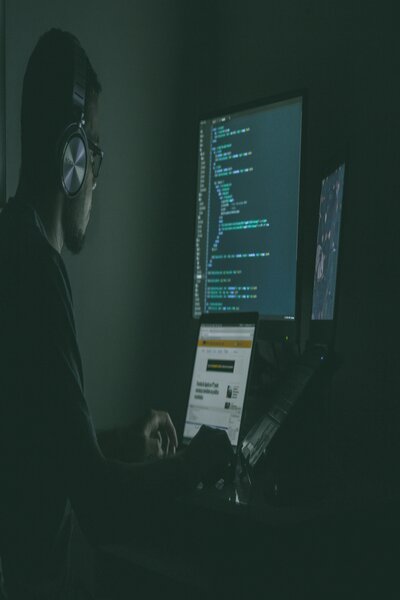Top Cybersecurity Threats of 2024
Cybersecurity threat is any criminal activity that has potential to take place through the use of computer devices and the internet. There are many types of cybersecurity threats today, they come from different sources technically known as vectors. Such sources may include state actors, terrorist groups, organized criminal groups, hackers, malicious insiders like; employee, supplier, vendor, competitor, etc. Contemporary world is increasingly being shaped and controlled by automation powered by artificial intelligence, internet-of-things, cloud infrastructure and others; dependence on digital handlers are no longer optional. This development comes with its inevitable security risks. Cyberspace has become the current battle field where criminal elements have continued to innovate various methods of attacks on existing vita resources. Knowledge of these attacks and the vectors is key to planning and implementing preventive and responsive security measures. In no particular order; see below highlight of some top cyber security threats of 2024. Social engineering: this sort of crime occurs when a cybercriminal deceives internet users to provide sensitive personal information; the information given is oftentimes used to commit various kinds of crimes against the person or the organization they represent. Social engineering plays on human intelligence and emotion; it uses of tricks and games to generate personal and confidential information from ignorant people and use same to commit further cybercrimes. Third party exposure: talks about level of potential cyber threats an organization is exposure to due to its relationship with vendors and suppliers within its information technology supply chain. Configuration mistake: otherwise known as misconfiguration, refers to errors in information technology system configuration settings; examples may include fraudulent dataset, hidden data, unstructured data, wrong formatting, failure to patch or wrong patch, non-configuration of firewalls, non-segmentation of network, not using multi-factor authentication, ignorant workforce. These mistakes can occur in any stage of development, deployment and operation of an information technology infrastructure. Artificial intelligence threat: this malicious act could occur when cybercriminals use AI techniques to exploit system vulnerabilities and launch attack. Mobil device threat: is a threat that take place through use of mobile device. Suffice to say that most known cybersecurity threats can occur via mobile devices. This power tool is also a powerful threat. Insider threat: Insider threat is any security risk that come from people within an organization. This maybe anyone who by virtue of their roles have access to sensitive information and other corporate resources capable of being used against the business. There are two types of insider threat. One is intentional threat, the other is accidental threat. The former is oftentimes premeditated and by impulse, the latter is by ignorance or accidental. State sponsored threat: this sort of event occurs when some rogue nation states sponsor or directly carry out cyber-attacks against fellow states, prominent organizations or individuals. DNS tunneling: this sort of attack allows hackers to bypass network security by using Domain Name System as conveyor for malicious data traffic. Tunneling is a powerful tool for hackers, and a serious threat for resource owners and managers. Ransomware: this event occurs when malware takes control, locks and encrypt a resource (this could be data, files, or system), render it inaccessible, then makes a demand as condition for its release. Trojan horse: is a virus that disguise as genuine or legitimate program to gain access to a system. Attackers oftentimes use social engineering as delivery channel for this sort of threat. Drive by attack: also known as drive-by download use “exploit kits” to launch automatic download of malware onto a system without a user’s consent. It is usually associated with compromised webpages or plug n play devices. Poor cyber hygiene: cyber hygiene means maintaining healthy cyber practices for security of systems, devices, networks and data. Main goal is to secure sensitive data against attacks. When this is lacking – poor cyber hygiene is the case. Example may include poor network security, lack of configuration management, lack of cybersecurity training for employee. Cloud vulnerability: this refers to weakness in cloud infrastructure which attackers can take advantage of and gain unauthorized access to data resources. Poor data management: this refers to fluid practices that negate the security of data resources. Cyber bulling: this sort of event happens when digital communication channel is used to send intimidating, assaulting and damaging messages to a target. Cyber stalking: this sort of event occurs when digital communication channel is used to track and harass a target (usually a person). DDoS attack: Distributed Denial of Service is a malicious act of disrupting and denying normal traffic flow to a web resource through the use of overwhelming requests that renders the resource incapable. Brute force: is a hacking method that applies trial and error to crack login credentials, encryption keys and pass words to gain unauthorized access to a network or account. It is reported that brute force success rate is rising; making it a simple and reliable tool for cyber criminals. Man-in-the-middle: also known as MITM or path attack occurs when a cybercriminal secretly intercepts and alters a flowing conversation between two parties without their knowledge or consent. Poor post incident management: this results when after-incident is not properly managed to prevent recurrence. Cybersecurity threats are a serious challenge to businesses. Managing it requires good understanding of different methods in which they may occur. What was discussed in this article is not exhaustive, as such there should be ongoing efforts to uncover and have good insight to more. ALSO READ Cybersecurity Threat Of Social Engineering









